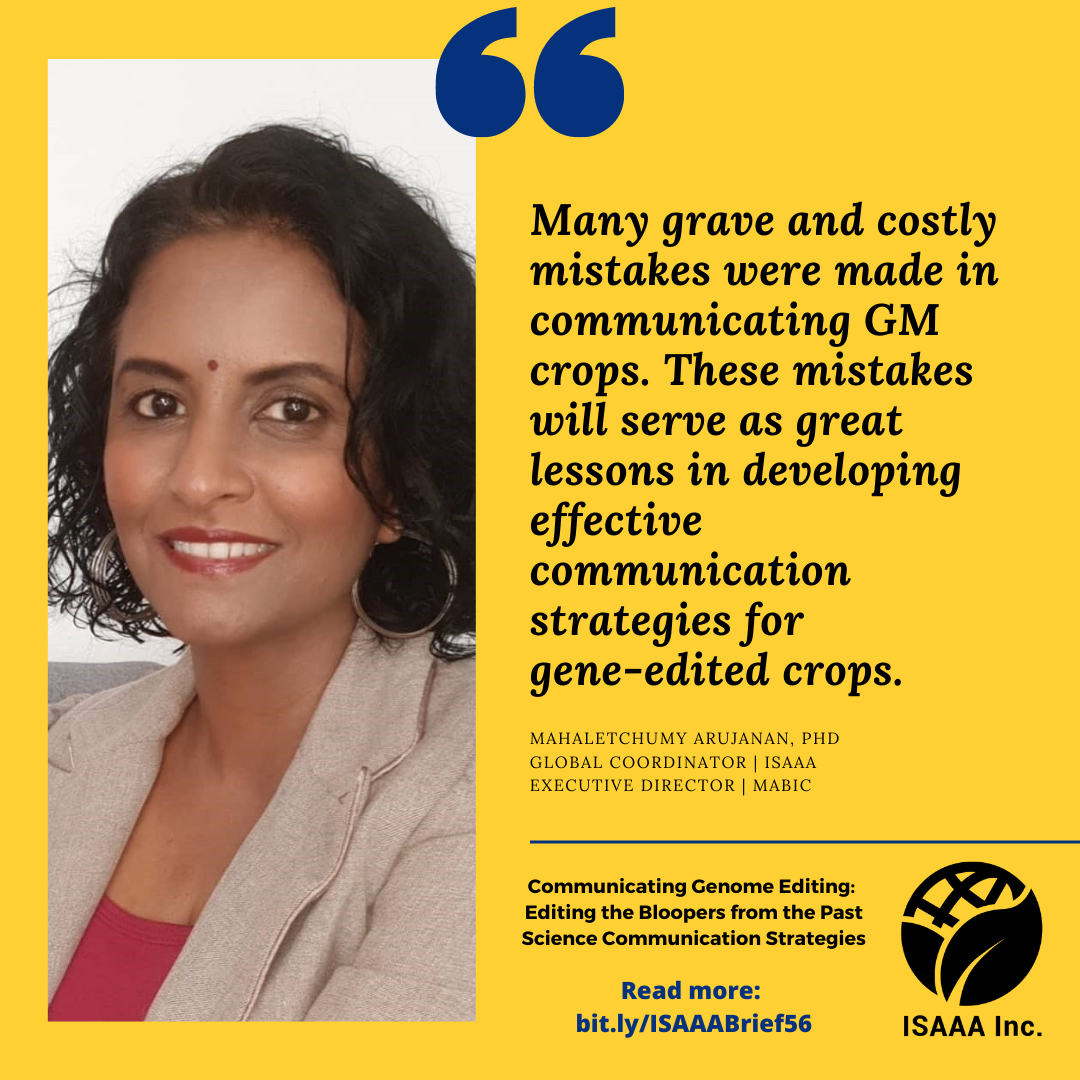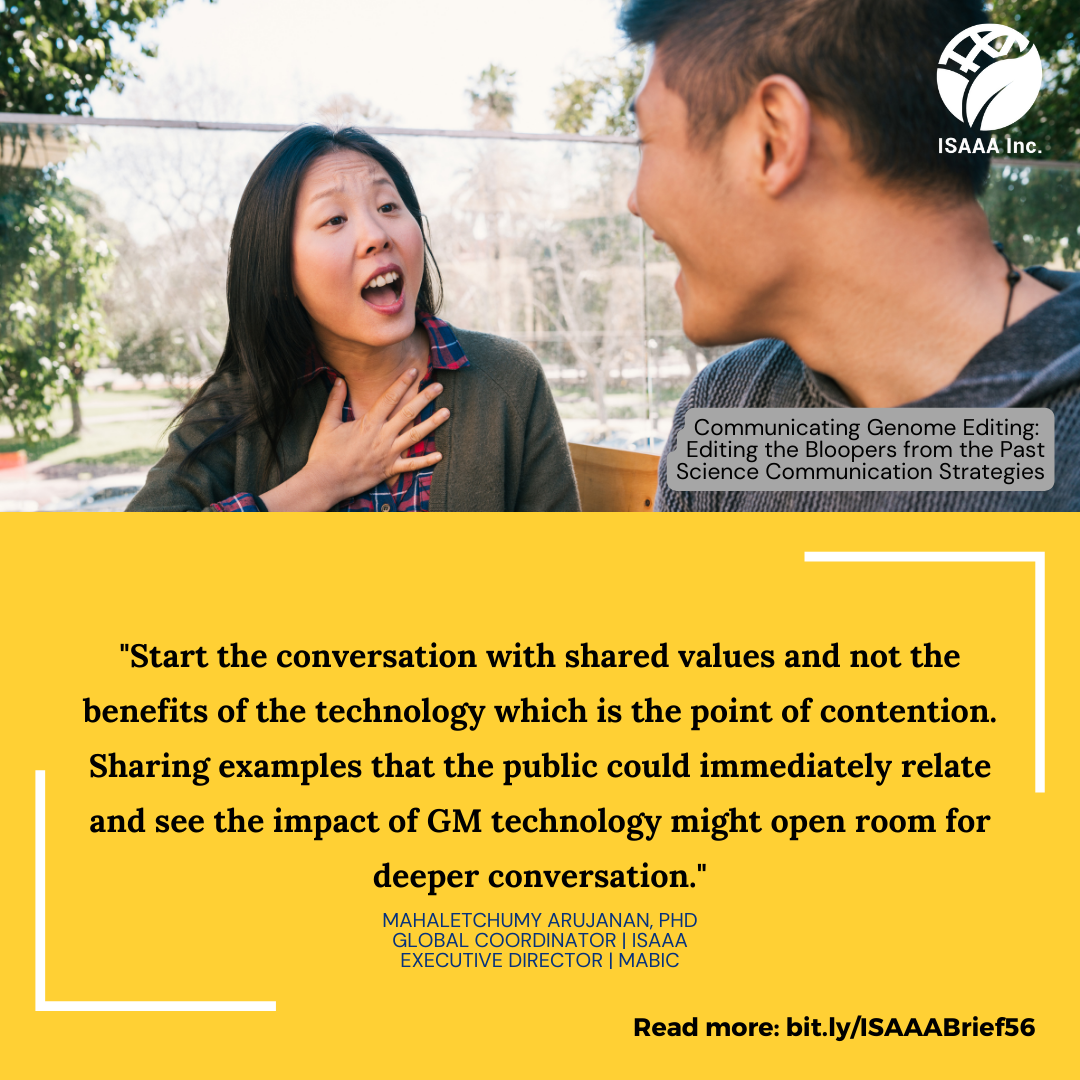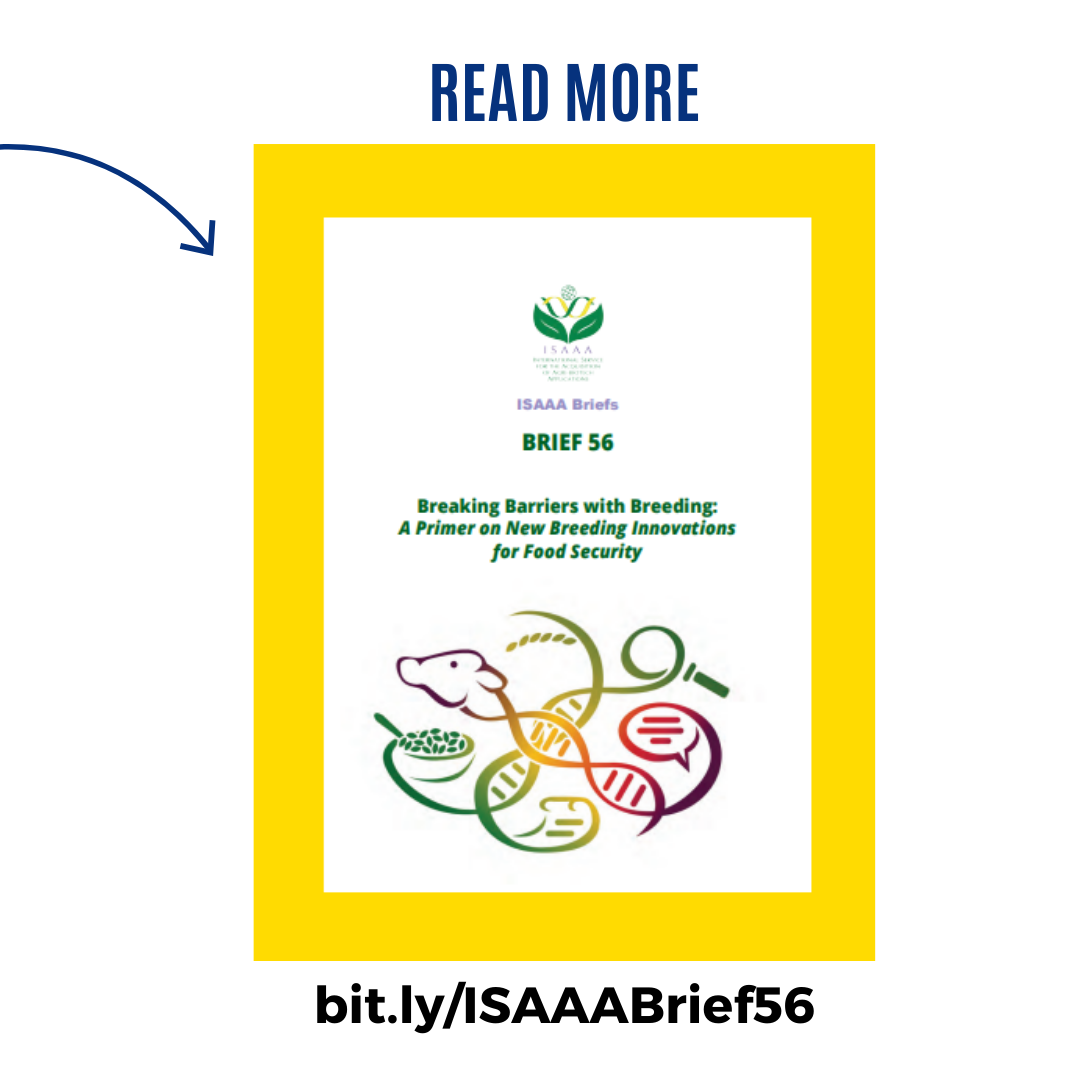From Bloopers to Breakthroughs: Science Communication Strategies for Gene Editing
| |
What can gene editing experts learn from communicating genetic modification? What is the right strategy towards public acceptance? These are just some of the questions answered in the chapter Communicating Genome Editing: Editing the Bloopers from the Past Science Communication Strategies authored by Dr. Mahaletchumy Arujanan, ISAAA Global Coordinator and Executive Director of the Malaysian Biotechnology Information Centre (MABIC). This chapter is part of ISAAA Brief 56 Breaking Barriers with Breeding: A Primer on New Breeding Innovations for Food Security.
What can we learn from communicating genetic modification?
When a new technology comes into the picture, the public usually responds with fear of the uncertainties. Is this new technology safe? What if there are unforeseen risks? – these are just some of their questions.
How do scientists respond to such worries? They provide them with information because they think that their lack of information leads them to wrong decisions about the technology, especially about its acceptance and use. While this may sound like a logical response, there are other factors that help shape public opinion.

“Communicating is not just about giving information,” Dr. Arujanan wrote as one of the bloopers in communicating about genetic modification. “Experts are used to giving information instead of asking questions. Asking questions makes the audience evaluate their claims and accusations against GM technology. A question I often pose to my audience is if they have seen tomatoes, chilies, wheat or any crops that we cultivate growing wildly in the forest when they go hiking. Not coming across these crops simply means all the crops that we cultivate are genetically modified in one way or the other. Claims do not have to be rebutted by the experts. Allow the audience to justify their claims, “ she added.
She emphasized the importance of finding shared values between the one communicating about science and the public. One way to do this is to share examples that the public could easily relate to. “Insulin is a good example. Cheese is a GM product that is unknown to many. Rennet used in cheese making is found in the lining of the calf stomach. Why kill calves for the enzymes if these enzymes can be produced through genetic modification by bacteria and yeast? How GM technology supports animal welfare and provides an option to vegetarians are values to be shared. Can we find similar values for gene editing?” she asked.

What are the necessary elements in communicating gene editing?
Dr. Arujanan presented the necessary elements that could help bridge the gap between the experts and the public, which can be applied in communicating about gene editing.
- Trust. Speak as a community member and not just as an expert. Adding human factors like sharing personal anecdotes creates the connection with the audience.
- Transparency. Be open about risks and shortcomings of the technology.
- Storytelling. Storytellers rule the world and critics of the technology are doing a great job on this compared to experts.
- Customization. There is no cookie-cutter approach in communication. Each target audience needs customized messages.
- Social media. One of the best information sources for the public yet underutilized by scientists.
Will it be easier to communicate about gene editing compared to GM?
Because of the promising benefits of gene editing in transforming agriculture, food, and medicine, it is imperative that communication about this technology must be dealt with cautiously, based on the experiences with GM and other technologies. Messages about gene technology must focus on what resonates better to the public and minimize the voice of the opposition. Dr. Arujanan highlighted that gene editing is more accessible to the public sector institutes and smaller companies, which addresses the common concern about monopolization by multinational corporations. She also stressed that the new traits employed to crops through gene editing are more consumer-centric, making it easier for consumers to appreciate their benefits. Furthermore, some gene editing crops do not contain a foreign DNA, making them non-GMO. With these breakthroughs and improved strategies in communication, gene-edited products could be in the hands of the consumers and fulfill their needs.

Download ISAAA Brief 56 for free to read the complete chapter.
| Newer Post | Archive | Older Post |
Science Speaks is ISAAA Inc.'s official blog. Weekly blog articles, authored by ISAAA writers, partners, and invited contributors, aim to help share, disseminate, and promote scientific knowledge and its vital role in achieving global agricultural sustainability and development. Your support to Science Speaks will help us achieve this goal. You can help us by donating as little as $10.

